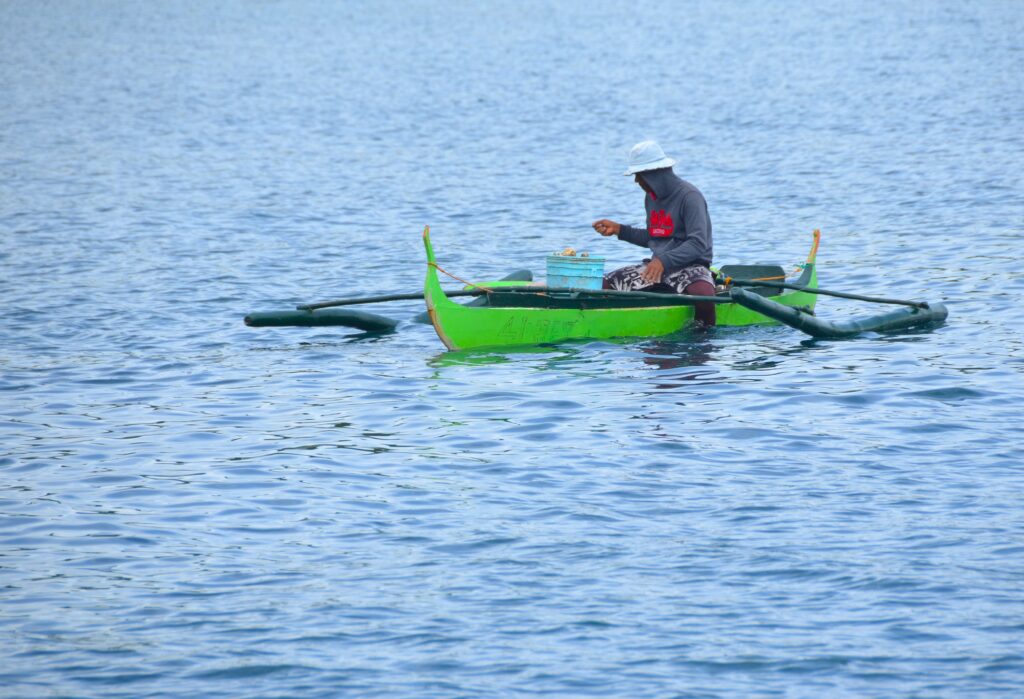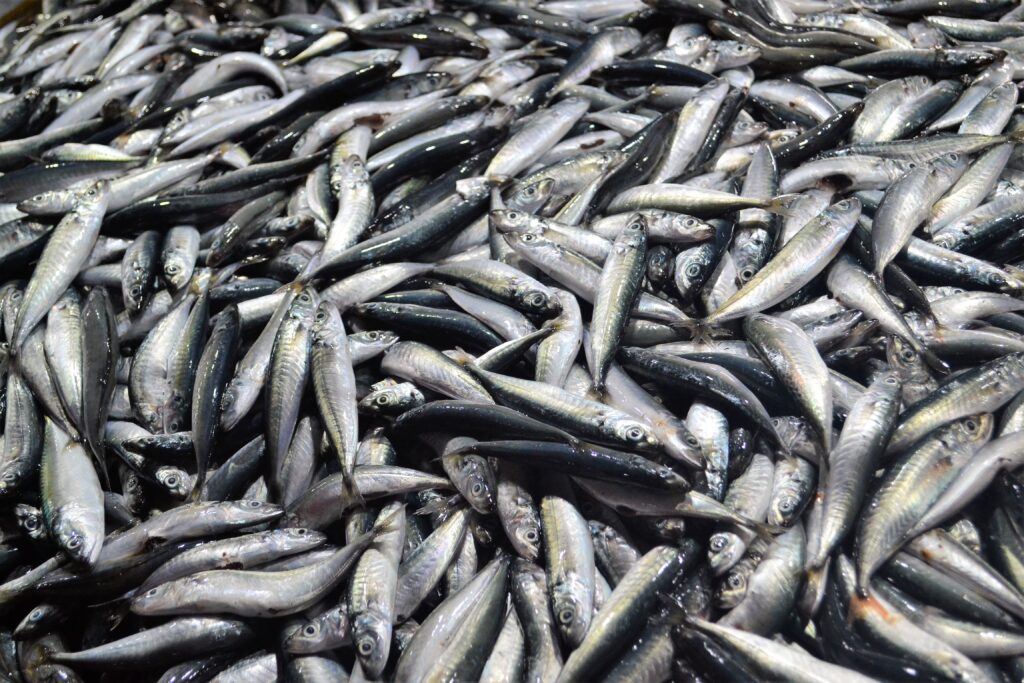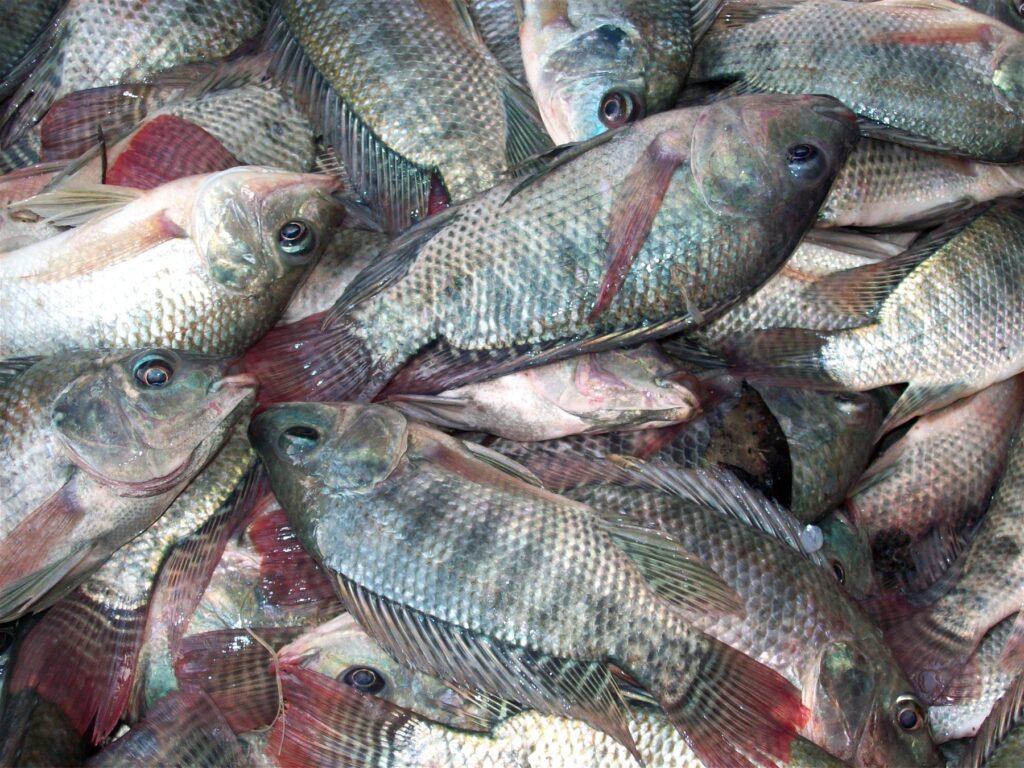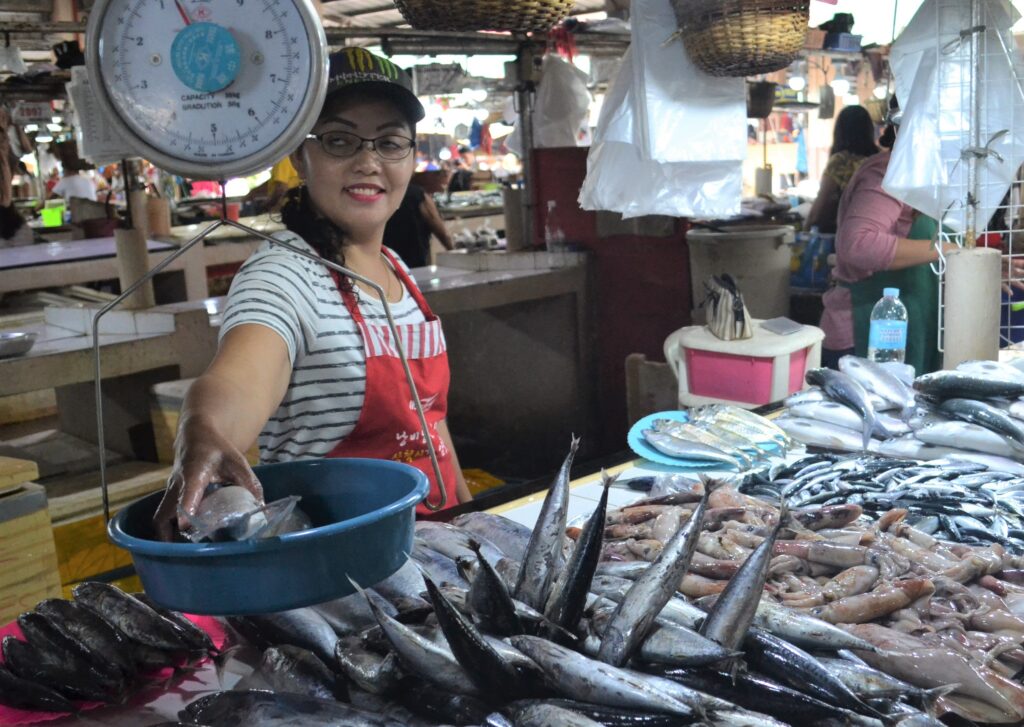State of fisheries: Where have all our fish gone?
Text and Photos by Henrylito D. Tacio
(First of Three Parts)
Give a man a fish, so goes a very popular Chinese saying, and he will eat fish for a day. Teach him how to fish, and he will fish for his lifetime. If we don’t watch out, this adage may soon become obsolete.
Like the other vital resources, such as forests, Philippine fisheries are about to collapse – a victim of the almost unabated “plunder of the commons.” As defined, the commons encompass unoccupied land and all waters, which are considered a God-given set of resources for the people to consume as much as needed.
But these resources appear to have been abused to the point of exhaustion. Despite the country’s vast marine resources – 220 million hectares of coastal and oceanic territorial water area and 36,289 kilometers of coastline – the Philippines is now experiencing a shortfall in fish supply.
Ask 63-year-old Ronnie Herrera and his son, Dondon, 18. Bago Aplaya, where they used to fish, was once the haven of fish in Davao City. But at one particular noon recently, the older Estrera already docked his banca (outrigger), but with no catch even as he started out at dawn. “It’s not only now, several times, we went home without fish,” he complained.

His son was fortunate, having caught one icebox of fish. But he said the fish were getting smaller and fewer, and they were forced to fish farther south into the waters of Sta. Cruz in Davao del Sur. “Fishers are already scarce in Bago Aplaya,” Dondon sighed.
Estimates show that if the present rapid population growth and declining trend in fish production continue, fewer fish will be available for Filipinos. The Philippine Statistics Authority (PSA) reports that fish constitutes the most widely consumed source of animal protein, with an annual per capita consumption of 40 kilograms (kg).
The Iloilo based Southeast Asian Fisheries Development Center (SEAFDEC) reported that in 2021, each Filipino consumed an average of 34.28 kg/year of fish and fishery products comprising 23.34 kg of fresh fish, 2.86 kg of dried fish, 3.89 kg of processed fish, 2.88 kg of crustaceans and mollusks, and 1.31 kg of others.
Currently, the Philippines is home to almost 110 million people. “About 62 percent of the population lives in the coastal zone,” said the World Bank report, Philippine Environment Monitor.
The Philippine fisheries sector is categorized into commercial fisheries, municipal fisheries, and aquaculture. SEAFDEC says commercial fisheries refer to capture fishing operations using fishery vessels of over 3 gross tonnage (GT) outside the municipal waters (beyond 15 km from the shoreline).
Commercial fisheries are classified into small scale using passive or active gear and utilizing fishing vessels of 3.1–20 GT; medium scale utilizing active gears and vessels of 20.1–150 GT; and large scale utilizing active gears and vessels of more than 150 GT.
Municipal fisheries pertain to capture fishing activities conducted with fishing vessels that have a gross tonnage of 3 GT or less, as well as other fishing methods that do not utilize watercraft. Aquaculture, on the other hand, encompasses the cultivation of fish in both inland and marine environments.
Fishery experts lament that if the rising demand is addressed exclusively through marine capture fisheries, the heightened strain on this sector may ultimately result in the collapse of both fisheries and the fishing industry, which currently provides employment for over one million individuals, representing approximately five percent of the national workforce.

“All fisheries are showing decline in total catch and per unit effort (total number of fish caught per unit of time) despite increasing effort,” the World Bank report noted. “Fish are harvested at a level 30 to 50 percent higher than the natural production capacity.”
Even if the government can check the current population growth, there’s one problem that cannot be solved by the country alone: global warming.
“We still have enough fish now but with global warming we may have difficulties in the next five to ten years unless we do something about it,” warns Dr. Rafael D. Guerrero III, who was the former executive director of the Philippine Council for Aquatic and Marine Research and Development.
This has been confirmed by a recent report released by the United Nations. “At least three quarters of the globe’s key fishing grounds may become seriously impacted by changes in circulation as a result of the ocean’s natural pumping systems fading and falling,” the UN report suggests.
Global warming refers to an increase in average global temperatures, as a result of too much greenhouse gases like carbon dioxide in the atmosphere. This, in turn, results in climate change. Marine species are not spared from the threats caused by rising temperatures.
Dr. Josefino Comiso, a physicist at the U.S. National Aeronautics and Space Administration, once told the Philippine media that increasing temperatures may eventually lead to significant mortality among various living organisms. He noted that the temperature thresholds would differ across species and that the loss of these sea creatures would have a serious impact on the food supply chain.
Even without the threat of global warming, the fishery resources of the country are still beset with other problems. Fishery resources refer to inland (lakes, rivers, freshwater swamps, and fishponds), coastal and offshore waters.

The Bureau of Fisheries and Aquatic Resources (BFAR) has identified several factors in the fishery’s decline. One of these is overexploitation. Oceans, after all, are global common property resources, open, with few limitations to all takers.
Although fish stocks are a renewable resource, many of them are strained to the limit. “Over the years, they have suffered from a widespread notion that the seas are inexhaustible and economic pressures that have encouraged over-exploitation,” deplored BFAR, a line agency of the Department of Agriculture.
“Fish and seafood trends in the Philippines,” which the Canadian government released on its website, said that approximately 70% of fishing grounds in the country “are currently overfished.”
“Overfishing is the primary cause of dwindling fish populations,” wrote Peter Weber, author of Net Loss: Fish, Jobs, and the Marine Environment, published by the Washington-based Worldwatch Institute.
The Manila-based Asian Development Bank says that most fishing vessels, which are often subsidized by governments, have twice the capacity needed to extract what the oceans can sustainably produce. The result, according to the bank, is “a vicious circle: as catches per vessel fall, profits plummet, and fishers overfish to maintain supplies, causing serious depletion of stocks and endangering long-term availability.”
The BFAR also attributes the decline in fish catch to the employment of destructive fishing methods like the use of cyanide and dynamite. The practice of cyanide fishing has been rampant among Filipino fishermen for more than 25 years already. According to an estimate, about 70,000 fishermen are engaged in blast fishing.
The destruction of the coastal ecosystem has also taken its toll on the country’s marine resources. Mangrove swamps, marshy areas, and coral reefs make up the coastal ecosystem and most of them are in bad conditions.

In 1918, mangrove forests spanned an area of 450,000 hectares, in stark contrast to the mere 138,000 hectares that exist today. “Throughout the country, in every coastal province you explore, the situation is consistent – barren expanses of coastline are entirely devoid of mangrove vegetation and are now fully vulnerable to the relentless force of ocean waves,” observed one environmentalist.
Mangroves are important feeding sites for many commercially important fish species (mullet, tilapia, eel, and especially milkfish), shrimps, prawns, mollusks, crabs, and sea cucumbers. Fry that gather in mangrove areas are very significant for aquaculture.
In the Philippines, an estimated 10% to 15% of the total fisheries come from coral reefs. About 80-90 percent of the income of small island communities come from fisheries. According to the late Angel C. Alcala, “coral reef fish yields range from 20 to 25 metric tons per square kilometer per year for healthy reefs.”
But today, only 4.3 percent (1,161 square kilometers) of its once-sprawling 27,000 square kilometers of coral reefs are in good condition. “Nowhere else in the world are coral reefs abused as much as the reefs in the Philippines,” says marine scientist Don McAllister. Apart from bleaching, the reefs face infestation by coral-eating crown of thorn starfish.
In inland waters, pollution has contributed to plunging fish harvest. “The increasing use of feed and chemicals in milkfish, tilapia, and shrimp culture is not only polluting inland waters, but also reduces fish catch and endangers public health,” said a fishery official.
The introduction of carnivorous species in inland water has also been blamed for the plummet of fish harvests in recent years. This has happened to Lake Lanao, where stocking of white goby and other predatory fishes has caused the decrease in fish stocks and extinction of some of its 18 endemic species.
“A fish crisis is in the making in this country,” warned Dr. Alcala. Before we know it, the crisis “could come anytime.” – (To be continued)

